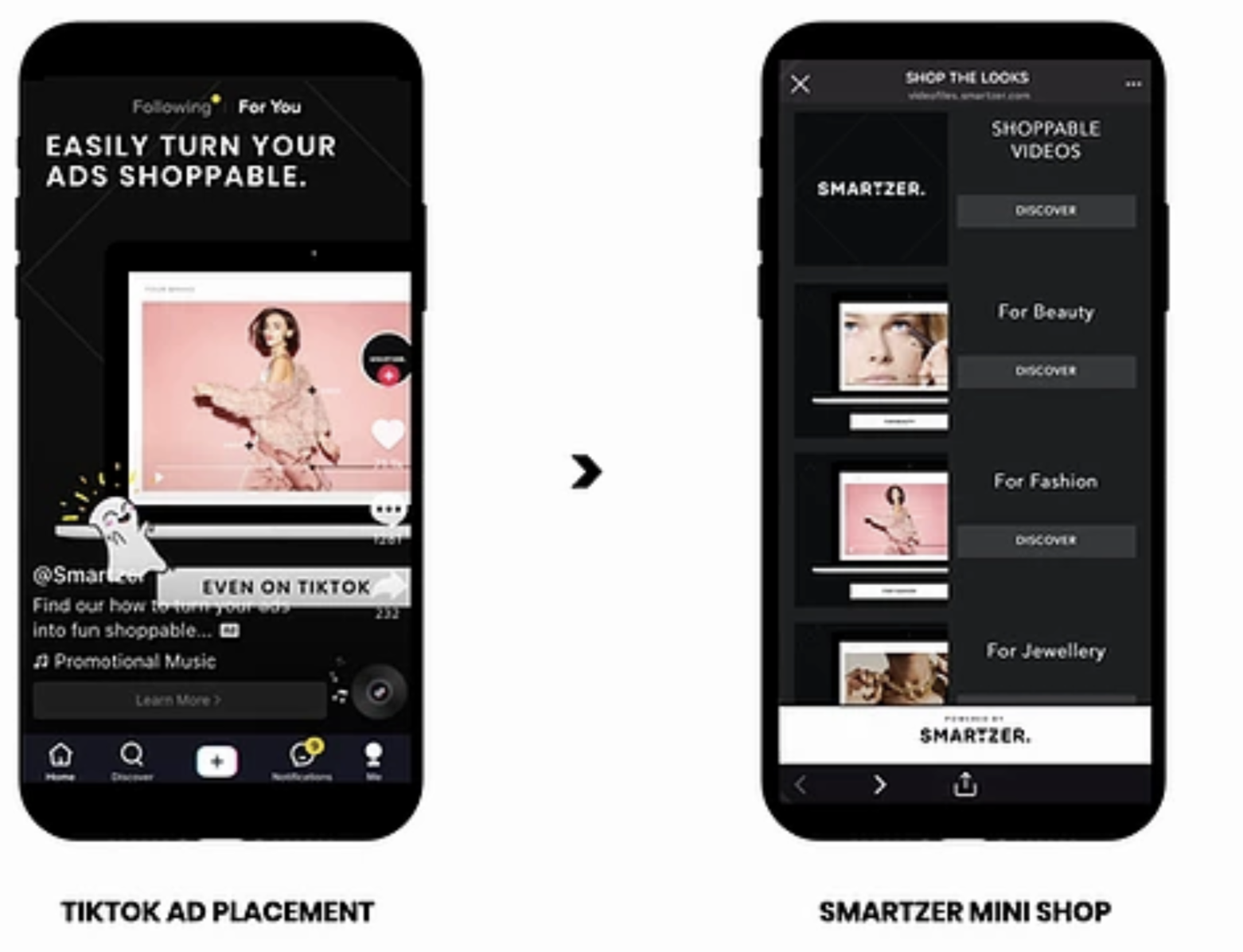2021 has seen its fair share of twists and turns, from TikTok’s explosive growth to iOS14+, the unveiling of Meta, the infamous Peloton vs. Big crisis, and so much more. We have seen how fast the marketing industry can shift but being growth experts means being proactive and ahead of the curve when it comes to upcoming trends and possible changes.
Within the last year, marketers have had to embrace all the new changes with open arms and adapt to all at the same time. With these transformations, our NoGood team was able to tweak and optimize marketing plans, knowing what does and doesn’t work so our campaigns became far more agile, responsive, and targeted. There’s already talk of new and exciting changes in the digital world and how that will impact an organization’s ability to communicate with its audiences. See below our breakdown of 2022’s key growth marketing trends.
1. Leveraging UGC for Growth
We are all aware of the “mobile-first” direction that we keep shifting towards as a society, and as our cellular plans keep getting more sophisticated (hello, 5G!), video streaming is easier than ever on smartphones and tablets. This is also why TikTok continues to grow more and more as time goes on: you can record videos anywhere and watch them at any time. TikTok has shifted the landscape of social media away from status updates and curated photo grids in favor of short video posts – and has been wildly successful in doing so.
Many brands are still operating under the misconception that TikTok is purely an app for frivolous lip-syncing content for tweens. In reality, there are thousands of communities on TikTok and users are flocking to them for everything from entertainment, activism, storytelling, tutorials, how-to guides, and more. It’s a UGC goldmine.
Since the platform relies heavily on different kinds of user-generated trends that involve music, graphics, or lip-syncing, it’s an easy, budget-friendly way for brands to jump on the bandwagon of trending content and incorporate these into promotions for their products or services. The cost of content creation is super low since it thrives on more organic content.
TikTok’s organic reach is unparalleled when compared to other social media platforms. Add to that the fact that 50% of the top brands do not have a presence on TikTok, and what you’re looking at, is a level playing field full of opportunity. And there’s no other content type that’s more authentic than UGC from your customers.
Here are a few tips to prepare for a more video-centric marketing world:
- Invest time in producing high-quality video content for your brand. You can use a video maker tool to assist you.
- Get active on platforms such as TikTok and Instagram Reels.
- Collect user-generated content by encouraging customers to capture their purchases.
- Allocate more of your budget to video production.
As mentioned above, UGC or User-Generated Content (which can be frequently spotted on TikTok and other social media platforms), is used across all stages of the buyer’s journey to help influence engagement and increase conversions. Nowadays, brands have to fight to be seen online, and competition is fierce for audience attention. As a result, buyers are more selective about the brands they interact with and purchase from, especially the notoriously fickle Gen-Z.
2. Demand for Social Responsibility
Consumers look for brands that practice what they preach and align with their values. If you’re looking for customer loyalty and lasting respect from users, you need to be an authentic brand. Allow all individuals and groups to recognize themselves in your marketing efforts and know they can connect with your business.
With the current socio-political environment, modern-day consumers take into consideration social responsibility, ethics, and transparency.
Sonia Thompson, CEO of Thompson Media Group, explains: “Truly inclusive brands walk the walk at every level. That means building an inclusive culture, building inclusive teams, developing deep degrees of customer intimacy with the diverse customers you serve, and having quality relationships within their communities as well.”
The interest in buying products from socially responsible and inclusive brands grew exponentially during the different global events of 2020 and 2021. Research from McKinsey shows that customers have a higher probability of purchasing from and supporting a brand that demonstrates their care for all customers, employees, and shared causes. When testing out messaging for social responsibility, rapid experimentation is your best friend here – this also allows marketers to be more agile. By testing creativity and messaging in different formats across core audiences and gaining insight and data rather quickly and pivot when needed. However, keep in mind that social responsibility may not sell products immediately, showing a sense of social responsibility is still both thoughtful and effective long-term play.
3. Life After iOS14
iOS14 is now a thing of the past — Apple’s devices have already moved on to iOS15+ (that is if you’ve updated your software!). However, the frenzy of all of the iOS14 impacts on marketers has just begun to settle. Since the majority of marketers weren’t able to track audience behaviors anymore, ads in turn were less personalized, meaning they were less effective. This meant marketers had a much smaller audience pool to target and overall less accurate reporting. But fear not: we have a detailed Post iOS14 Strategy article, as well as a TL;DR version on how to approach targeting post-iOS 14:
- Diversify Spending: shift ad spends that had a previous majority allocation to Facebook to other platforms like Google since there is the remarketing ability to target users based on search intent.
- Report on Facebook success with Google Analytics: since we’re not saying to nix Facebook altogether, just use a different method to report on Facebook conversions. By using UTMs Google Analytics can track some of the activity from Facebook campaigns.
- Use First-Party data for lookalikes and retargeting: strategies using LALs or retargeting an existing customer list have always proven strong results. The new privacy updates across all of big tech will allow for marketers to begin focusing on gathering their data, which is much stronger.
- Use other advertising routes: by diversifying your advertising channels across other established platforms advertisers will not be as reliant on the big ad platforms such as Google and Facebook.
4. Branded Audio Content Is Reshaping Marketing
Brand marketers who include digital audio have a unique opportunity to reach a truly immersed audience—and create a competitive edge. The benefit of using digital audio in your marketing efforts? Digital audio can go wherever the listener takes it. Spotify listeners soundtrack their days with their favorite music and podcasts, spending up to 2.5 hours a day listening across devices. Digital audio content complements, rather than detracts, from people’s activities.
People listen to Spotify almost everywhere—in the car, gym, office, and even in the shower. It is more possible now than ever to understand how people stream across devices throughout their day and deliver the most relevant message at the right moment.
Understanding an audience’s context and taking an audience-first approach to brand marketing strategy will help brands show up in the moments that count—for both the target listener and the product or service. Spotify’s research shows that listeners prefer when an ad recognizes their listening moment, mood, or context. Not only does this make for an uninterrupted listener experience, but contextually relevant ads can make a brand more memorable.
As audio content becomes much more common in the online world, marketers are now also looking to shift their ads towards a more audio-first format to benefit their brands. Although most audio platforms might not have great monetizing features or conversion paths at the moment, they still provide the engagement and brand awareness companies need.
Spotify now offers a paid subscription platform for podcasters that gives them maximized revenue, wide reach, and discoverability.
This feature is available to creators through Anchor and allows podcasters to mark episodes as subscriber-only and publish them to Spotify and other podcast-listening platforms. Through 2022, this program will come at no cost to the creator, meaning that participating creators receive 100% of their subscriber revenues (excluding payment transaction fees). Starting in 2023, Spotify plans to introduce a competitive 5% fee for access to this tool.
Adding audio to your marketing mix will expand your content marketing strategy and even increase your website SEO. Google is now starting to rank podcasts on the search results page (SERP). Hence, having podcasts or videos embedded in your page can help increase your ranking potential. Also, consider transcribing your podcasts into blog posts to help voice searches pick up on the more natural speaking language.
5. Social Commerce
Global eCommerce sales grew 30% in 2021 and we just continue to see new ways emerge to allow content to be “shoppable.” We see this with Instagram offering discounts on in-app purchases and ITV’s shoppable episodes where consumers can purchase items directly through a TV show/episode.
The experience customers have with a company matters, people are looking for a shopping experience that is quick, easy to navigate, and efficient. It all starts with a compelling ad with enticing content, from there it should be as easy as click, shop and pay. If you don’t get the conversion on the first touch, you always have retargeting! Integrating these principles and ensuring that content on social media is shopper-friendly is absolutely essential:
- Website/shop is speedy
- Utilizes a user-friendly UX
- Is 100% mobile-friendly (most customers shop via their smartphones!)
- Has clear purchasing instructions so users won’t leave before buying, thinking “It’s too complicated!”
- Offer immediate and easily accessible customer support
Modern customers aren’t always known for their patience, but brands and organizations like Amazon can now deliver lightning-fast checkout experiences. A simple, fast checkout experience means fewer abandoned carts, a higher sales conversion rate, and happier customers.
For example, Shopify’s partnership with TikTok is likely the first of many integrations with eCommerce platforms. Merchants can connect their TikTok Business account to Shopify to generate in-feed shoppable posts from videos. Once signed up with TikTok for Business, brands can create any of the following:
- In-feed ads: native-looking videos that appear in the user’s feed.
- Pre-roll ads: videos that start when a user opens the app.
- Promoted hashtag challenges: videos encouraging users to submit clips using a custom hashtag. This is best for brand awareness – Pepsi’s #ThatsWhatILike campaign is a perfect example; it resulted in over 13 billion views and reflected the TikTok trends by encouraging silly, fun, and viral videos that included Pepsi.

6. Increased Adaption in Voice Search
We are all familiar with Alexa, Siri, and Google’s virtual assistance. Not only do these digital assistants answer short, informational queries like “Who is our First Lady?” and “What are the fashion trends of 2022?” but these VA’s can now also process more local, conversational, and customized searches such as “Where’s a nearby coffee shop I can work from today?” Voice is also expected to be a $40 billion channel by 2022. Implementing voice search tactics allows marketers to empower users to get the answers they want and need.
The Smart-speaker market has continued to make noise as well. An estimated 55% of American households were expected to own a smart speaker in 2022 (Juniper Research), and that figure should keep climbing as 5G networks come online. By 2022, 70% of consumers are expected to be using voice to shop instead of going to brick-and-mortar stores.
Voice searching isn’t just convenient for consumers; it’s tied to vastly improving revenue across businesses. The outlook for businesses’ adopting voice search in a variety of ways is a continuing trend:
- 71% of executives at companies believe voice search will improve the overall online user experience; 66% say it can help drive conversion rates and boost revenue
- Most (three-quarters) businesses say they’ve already realized quantifiable benefits from voice- or chat-assistant initiatives. Those benefits have included a 20%+ reduction in customer-service costs
- Voice-driven shopping is expected to hit $40 billion (way up from $2 billion) by 2022
- In 2030, the global AI-based and voice recognition market should reach $27.3 billion
Context and conversational search are now essential as voice search continues to evolve. Marketers need to thoughtfully incorporate a voice search strategy into their websites and double down on excellent content, written in a conversational tone.
It is important to understand that people who type a query, and people who ask questions into voice search, are often two different types of people. The “typer” might be OK with doing research, while the “talker” typically wants quick answers and instant results. Both types of people should be considered.
1. Understand Your Type of Customer & Device Behavior
2. Focus on Conversational Keywords
3. Create Compelling Persona-Based Content
4. Provide Context with Schema Markup (And get acquainted with schema markup, if you aren’t already.)
5. Build Pages That Answer FAQs
6. Think Mobile & Think Local
7. The Use and Expansion of Crypto in Marketing
Cryptocurrency has skyrocketed: thanks to everyone from Elon Musk to that kid from high school that won’t stop posting about it on Facebook. While still only used by a niche U.S. audience, accepting cryptocurrency now could help brands attract new customers—but only if the demographic is the right fit, said Andrea Chapman, marketing manager at cannabis site Nature and Bloom.
Here are some thoughts on how crypto could factor into marketing moving forward:
- Payments: Crypto credit cards (like those offered by Coinbase, Crypto.com, BlcokFi…), the ability to pay with crypto on PayPal, buy now, pay later (BNPL) platforms like Klarna integrating Safello (just to name a few). The payments category is ever-changing, and will absolutely have a material impact on how products and services engage customers.
- Analytics: Data analytics is paramount to the digital marketing revolution. The ability for marketers to leverage it shows tremendous potential in a decentralized ecosystem. The use cases for oracles like Chainlink, querying tools such as The Graph and onChain analytics have only scratched the surface of their potential for brand marketers.
- Content creation: Important here as well as in every other aspect of marketing right now. The rights of content creators and publishers have long been a hot button in the marketing ecosystem. Projects like Audius are demonstrating how a decentralized ledger has the potential to be a gamechanger in protecting copyrights, giving consumers more choice in how they pay for and consume content, and how content is stored and distributed.
- Social media: Twitter recently announced an executive role to spearhead its “BlueSky” exploratory for a decentralized standard for social media. Facebook is purportedly piloting a stablecoin-based digital currency of its own, “Diem”. Social media and content marketing have, arguably, been at the forefront of the brand marketing playbook over the past five years, and there isn’t much evidence to suggest that would change with crypto.
- Loyalty: Loyalty/customer relationship management programs, which often struggle with creating a “currency” to deliver as a reward to motivate true behavior change vs. merely defending defection, will find an entirely new avenue to go down in NFTs. Projects like Cryptibles and Enjin are offering them. Also, as experiences outpace “stuff” as a coveted reward for loyalty, the promise of NFTs for “digital tickets” to unique experiences like that offered by Microsoft, collectible trading and auctions, and the ability to connect in-person events with a digital experience is an exciting prospect to consider.
8. Tapping Into Extended Reality
Experiential marketing allows audiences to step into an immersive experience that is often in a physical place.
Brands like TOMS Shoes, TopShop, Oreo, Sephora, and IKEA also already successfully use these technologies for marketing purposes. IKEA, for example, created the app IKEA Place, in which AR technology allows in-store shoppers to virtually place items into actual physical living spaces. AR technology enables consumers to imagine how products look and feel before buying them. As you can imagine, this “hands-on” experience can drastically increase buying consideration and drive sales.
AR provides a unique experience to the customers. Because this technology can be used through mobile, customers can find it easier to adapt and it will be convenient for enterprises to promote their business, products and increase sales.
XR can also have a significant role in engaging customers. For example, a shopper chooses a product, but might not be too sure about whether or not to purchase it. With XR technology, they can have “hands-on” experience with the product beforehand. These technologies ensure they have virtual experiences but are still engaging with the real world.
Additionally, these technologies have opened the door to personalized ad experiences that are unique to every individual – think programmatic advertising, messaging, and marketing at the individual level. Getting in on the ground level with these technologies as they take on a more prominent role in consumers’ lives is an advantage to be considered for the future.
Looking for a fun and simple way to delve into AR? A business card can become interactive by highlighting contact information in creative ways by looking at it through AR technology. For a more immediate start, social media apps like Instagram let anyone create AR filters to share with their audience.
For now, you should be up to speed on some of the incoming growth marketing trends for 2022. However, always keep in mind that growth marketing, especially growth marketing trends, is and are an ever-evolving space and something that became a trend can just as fast become a thing of the past. But if you’re trying to consistently keep up with growth marketing trends, be sure to sign up for our NoGood newsletter where we can send insights and marketing trends directly to your inbox!






